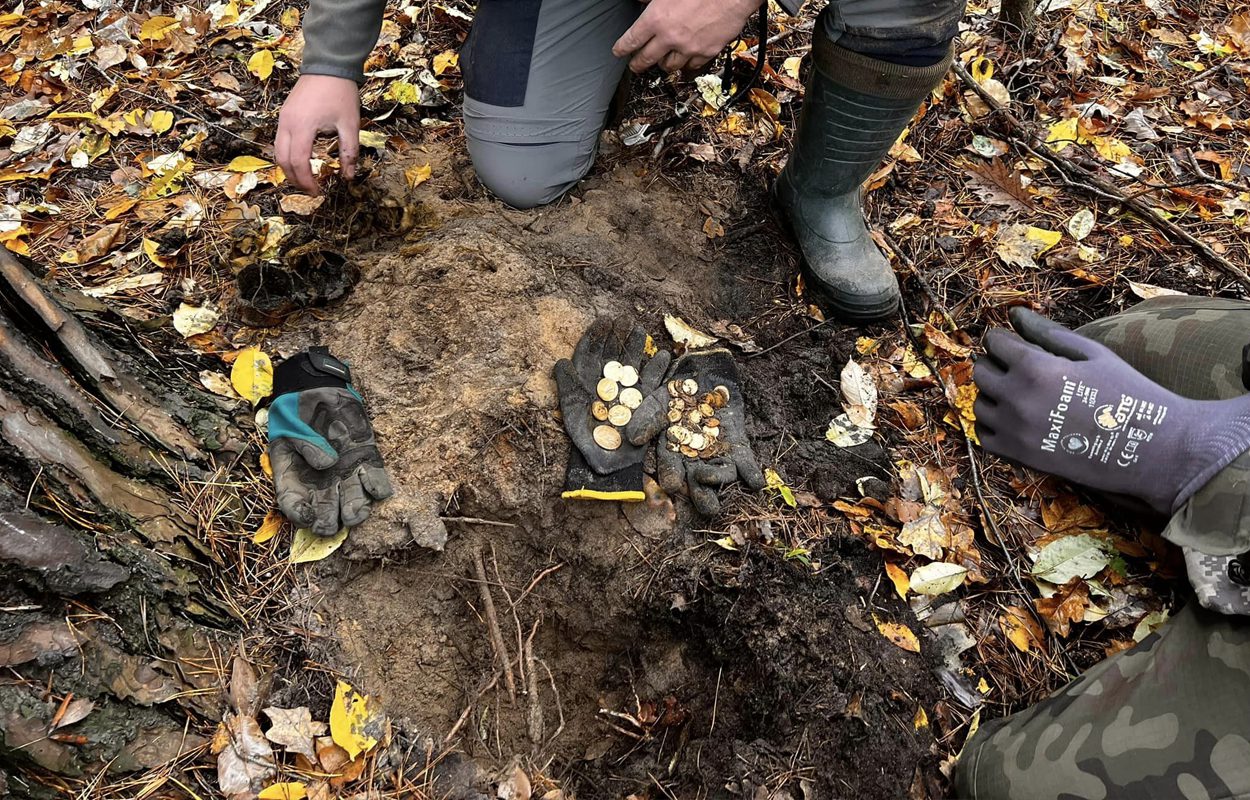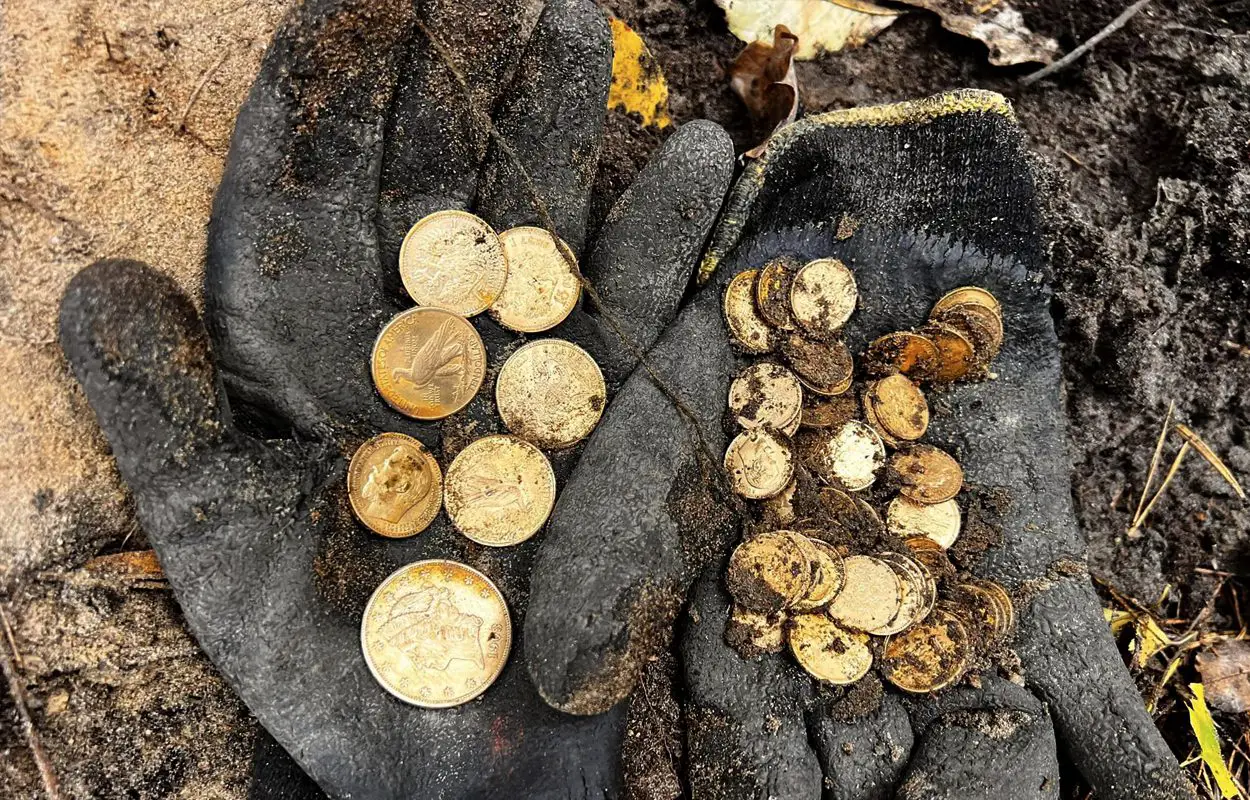A team of metal detectorists from the Szczecin Search Group Association have uncovered a treasure hoard consisting of American dollars and Russian rubles in the forests near Szczecin, Poland.
The detectorists were conducting a survey to find relics from WW2, in particular, traces of the Battle of Szczec, fought between the Soviet Red Army and the Wehrmacht.
Prior to the outbreak of WW2, the Wehrmacht made Stettin the headquarters for Wehrkreis II, which controlled the military units in all of Mecklenburg and Pomerania. At that time, less than 1% of the city inhabitants were Polish, who became marginalised and persecuted by the rising Nazi regime.
In 1944, Allied air raids and intense battles between the Wehrmacht and Soviet forces resulted in the devastation of 65% of Stettin’s structures, including the near-total destruction of the city centre, seaport, and local industries. The city was eventually captured by Soviets forces in 1945, resulting in the majority of remaining inhabitants abandoning their homes.

According to a press announcement by PAP, Detectorists from the Szczecin Search Group Association have found 70 coins deposited in a heavily corroded metal can buried at a depth of approximately 15 to 20 cm’s. The total discovery has been estimated to be worth 100,000 zloty, which is over 24,000 US dollars based on current conversion rates.
A preliminary study of the coins has already identified a Liberty Head double eagle, also known as a Coronet double eagle, which is an American twenty-dollar gold piece designed by Mint of the United States Chief Engraver, James B. Longacre. The coin has the motto “In God We Trust”, which is a Type III that circulated between 1877 to 1907.

Also identified are ten dollar Indian Head eagle gold coins dated to 1912, which was designed by Augustus Saint-Gaudens and circulated between 1907 to 1933.
Łukasz Istelski from the Szczecin Search Group Association, said: “This is a dream come true for every detectorist. It is not only a material treasure, but above all a great discovery.” Istelski noted that the coins could have been related to war activities and deposited for safety, but their origin is truly a mystery.
Header Image Credit : Szczecin Search Group Association

